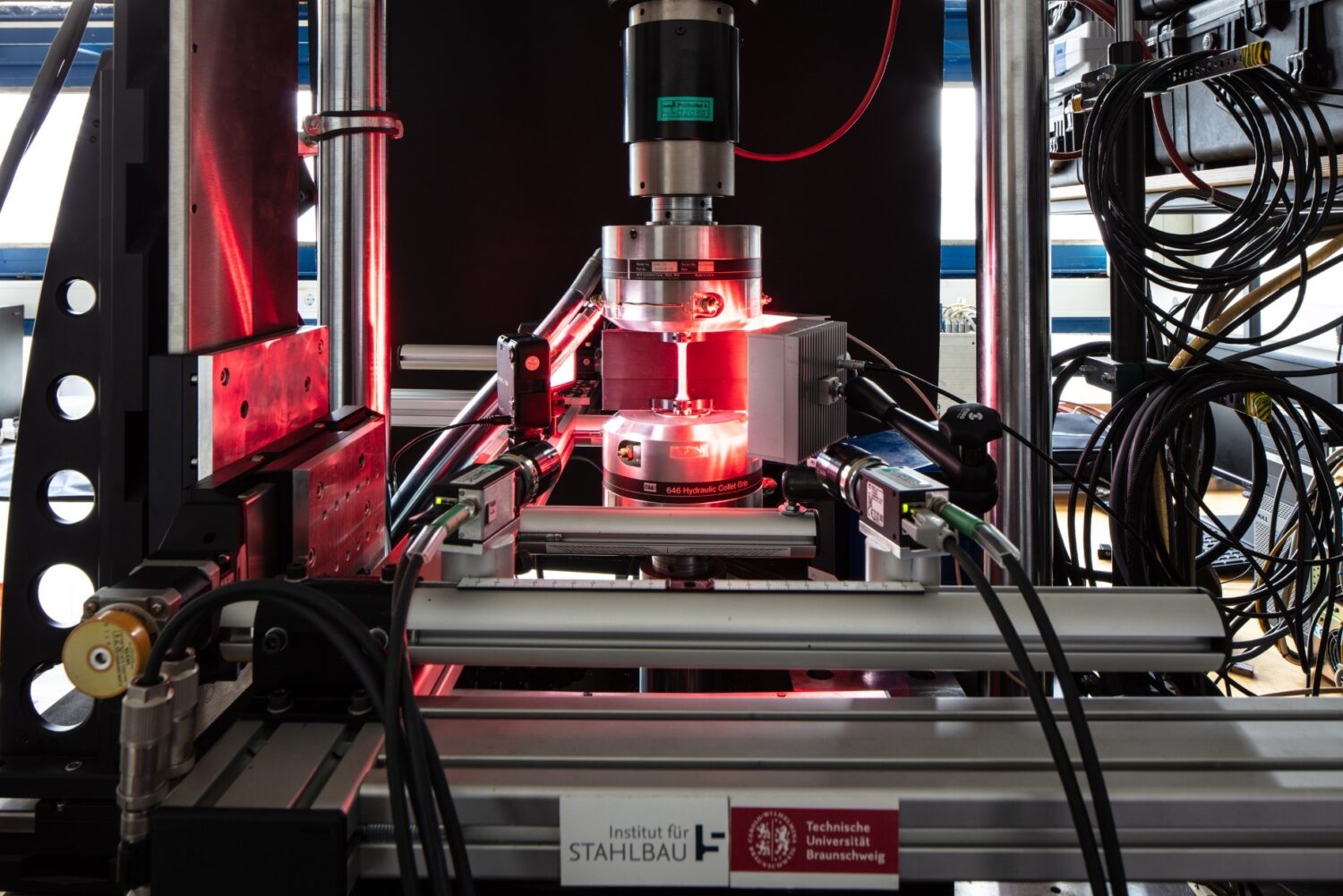Research Summary Report of A07
Wire and Arc Additive Manufacturing (WAAM) of Complex Individualized Steel Components
[08.09.2023]
Jahns, Hendrik; Doctoral researcher;
h.jahns@stahlbau.tu-braunschweig.de
Unglaub, Julian; Principle Investigator
j.unglaub@stahlbau.tu-braunschweig.de
Thiele, Klaus; Principle Investigator
k.thiele@stahlbau.tu-braunschweig.de
Institute of Steel Structures
Technische Universität Braunschweig
Project – main goal
In project A07 the design, manufacturing and mechanical properties of complex individualized WAAM steel nodes for use in construction is investigated. A new method is developed to design force flow optimized steel nodes as connectors between semi-finished parts and anchorage structures considering the manufacturing possibilities of the WAAM-process and the resulting material behavior. The manufacturing possibilities will be identified by case study demonstrators, which represent occurring features of the designed node. The produced parts are characterized regarding their mechanical properties. For that an advanced material testing method is applied to evaluate the potentially anisotropic material behavior. With buckling tests on case study demonstrators the component behavior will be investigated.
Summary
The Thiele working group is currently examining how specific manufacturing techniques affect the mechanical properties and surface quality of thin-walled WAAM components. These techniques include overhangs, start points, interfaces of walls, and print pauses. To conduct their research, the group extracts “as-built” and machined dog-bone tension specimens from walls printed using these techniques. The surface of the “as-built” specimens is then analyzed using a structured light scanner to identify geometric irregularities in comparison to a regular wall. Next, the specimens are subjected to a tensile test while being monitored using an optical measurement system, specifically a two to four camera DIC-system, to measure full field deformation behavior. The data collected from the 3D-scan, DIC-measurement, tensile test, and manufacturing monitoring will be combined to create a digital shadow of the tensile specimen. This digital shadow will be used to investigate any possible correlation between anisotropies, surface irregularities, and the special manufacturing techniques, ultimately helping to characterize their influence on the mechanical properties of thin-walled WAAM components. This knowledge will be used to extend the digital shadow to a digital twin which is capable to encounter the manufacturing process and predict component performance.
Current state of research
The study of material behavior in walls produced via Wire Arc Additive Manufacturing (WAAM) has yielded insights into their mechanical characteristics. Notably, vertical and horizontal specimens exhibit consistent material behavior, regardless of specific print features, implying the feasibility of a single material model for describing machined WAAM walls. The analysis reveals that specimen orientation primarily affects the yield stress, while Young’s Modulus and tensile strength appear less influenced.
The structured light scans yield two essential parameters: thickness (vertical distance between top and bottom surfaces) and eccentricity (shift in cross-sectional center orthogonal to build direction).
Force-displacement curves of as-built tensile specimens display varied mechanical performance across different print features, with overhangs, start points, or printing pauses consistently showing lower displacement at failure compared to regular walls. Moreover, specimens with overhangs or start points demonstrate reduced maximal force values.
Surface topology analysis underscores overhang angles’ impact on wall thickness and eccentricity, resulting in wavier surfaces with smaller cross-sectional areas. Start points lead to a more brittle behavior of as-built specimens due to pronounced thickness variations near the starting point, reducing the mechanical performance.







